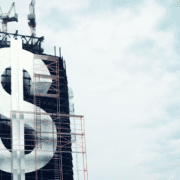Where Are We in the CRE Cycle?
RealPage IMS hosted a webinar to discuss where we are in the CRE market cycle. Specifically, which economic indicators are the most relevant, how different asset classes are being impacted, the state of the debt market, and how leveraging technology creates trust and transparency with your investors. The webinar was moderated by IMS’ VP of Customer Success, Ron Rossi. Rossi was joined by two experts from the CRE industry: Laura Dietzel, Senior Manager with RSM US LLP, and James Eng, Senior Director with Old Capital.
Watch the free on-demand webinar: Where Are We in the CRE Cycle?
The first topic discussed during the webinar was about specific indicators to help determine the current phase of the CRE cycle. The increased supply paired with a high occupancy rate would indicate that we are in the third phase of the cycle, hyper supply. This would put us on the downturn of the cycle, but to be clear, a recession is not imminent in the near term (at least in our opinion). The consensus is that we have just recently peaked. Furthermore, this cycle is not expected to be nearly as steep as the cycle that ended in 2008, nor the downturn as severe. Laura from RSM US LLP pointed out that along with the multifamily asset class, the industrial sector has seen historic occupancy rates in the second quarter, currently at 97%. Laura also discussed how some private equity shops such as Blackstone have doubled down on industrial properties. Aside from occupancy rates, another important indicator of the market cycle would be global markets. Ron touched on how we are currently entering the hyper supply phase of the cycle. An indication of this would be how there is a decrease in investments and capital coming from foreign countries and markets. Ron also mentioned that the 10-year treasury rate is increasing.
After discussing some other important market indicators, webinar attendees were asked to participate in a poll about where they thought we were in the CRE cycle. The results showed that 80% of participants thought we were in hyper supply, 18% indicated we were still in expansion, and 2% felt we were already in a recession. The poll results opened up a discussion about how the geography of some markets could be experiencing a different phase in the cycle. These poll results were ultimately consistent with what Ron and Laura stated, that the cycle is in the hyper supply phase. However, a handful of voters did indicate that their geographic region was experiencing the expansion phase, as well as a select few experiencing recession-like indicators.
Another hot topic was about how Millennials will impact the cycle. As Millennials graduate college and enter the work force, their decisions will heavily impact the CRE industry. Millennials are coming out of college with high amounts of debt and student loans, which in turn delays the home owning process. Instead of owning homes, Millennials are driving rental markets. Ron said that he is starting to see an oversupply in the multifamily segment, specifically Class A. Laura added that even though Millennials are driving rental markets, they aren’t necessarily purchasing luxury apartments. This distinction is leading to oversupply of Class A and luxury multifamily property.
Next the panelists discussed the CRE debt market. As LIBOR and the 10-Year rates are increasing, one would expect cap rates to trend upwards commensurate with interest rates. James Eng with Old Capital weighed in and was able to give a unique perspective on how he sees debt within the market. James stated, “The reason interest rates are going up is because everybody is expecting inflation to be higher.” Ultimately, as interest rates increase, it makes sense that rent will increase as well. Multifamily demand from an occupancy as well as an investment perspective have not decreased, even though rent and interest rates are increasing. James elaborated on the narrowing of the spread on multifamily properties, on how much it will cost an investor to purchase a property, and then on the cost of debt based on the interest rate. James also talked about how there has been some buyer pushback. He explained that the demand for multifamily properties is the same, but there are fewer buyers in the market to compete with. The markets with high demand are showing that prices are staying the same, but investors are having to compete with fewer bidders for a deal. With the increasing interest and treasury rate, banks are willing to take a lower spread on fixed rate deals.
The last topic covered on the webinar is how firms are leveraging technology to place themselves in a competitive position based on the market cycle. Across the board, investors are seeking more transparency. They want access to real-time information on deal and investment performance to avoid being blindsided, as in the 2007 and 2008 crash. Sponsors are improving their tech stack to satisfy the desire of their investors. Aside from providing transparency to investors, firms can streamline back-office functions, leading to increased efficiency and cost savings. In the case of a downturn, CRE technology can allow sponsors to have a deeper impact from a managerial standpoint, with less manpower.











